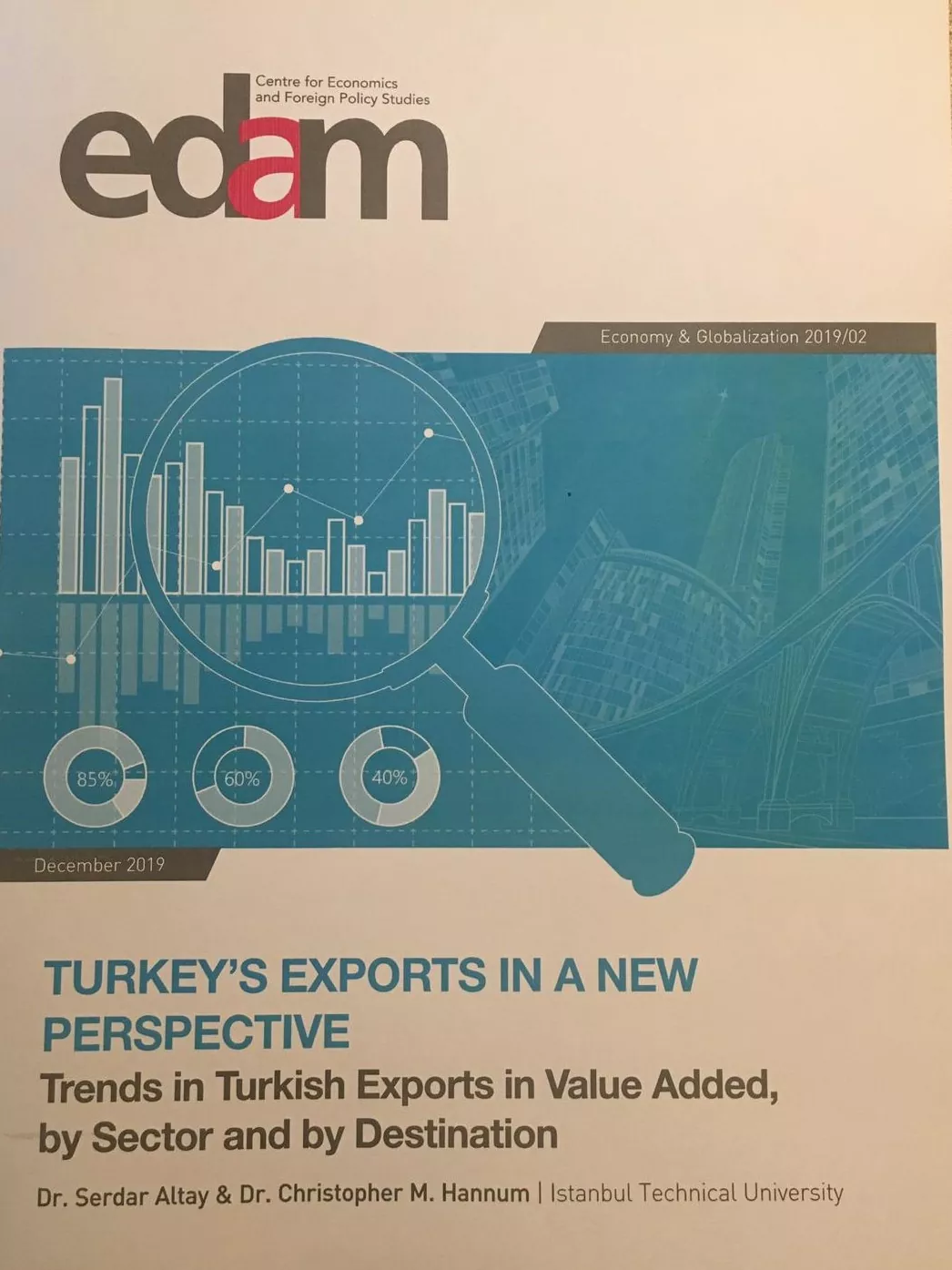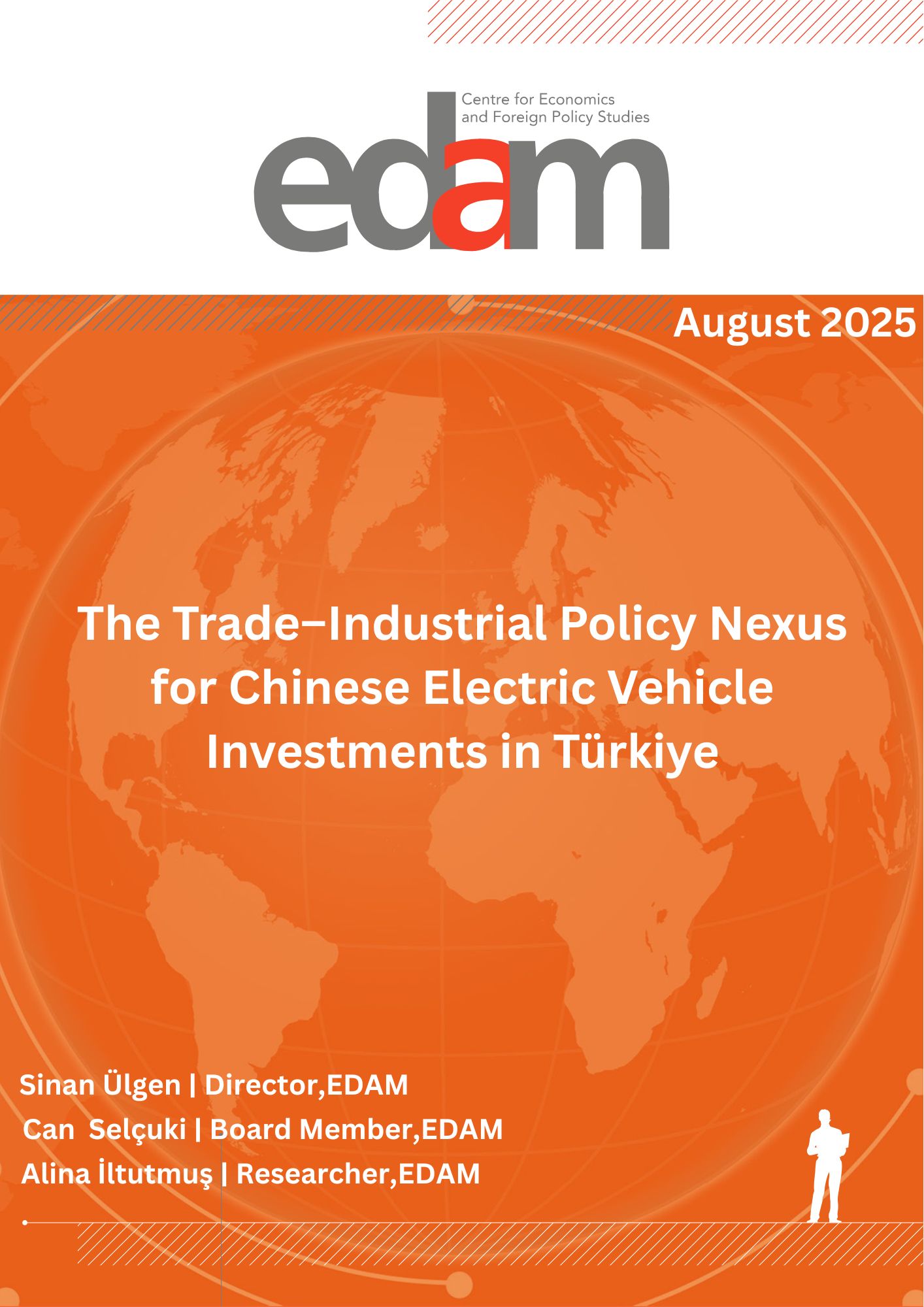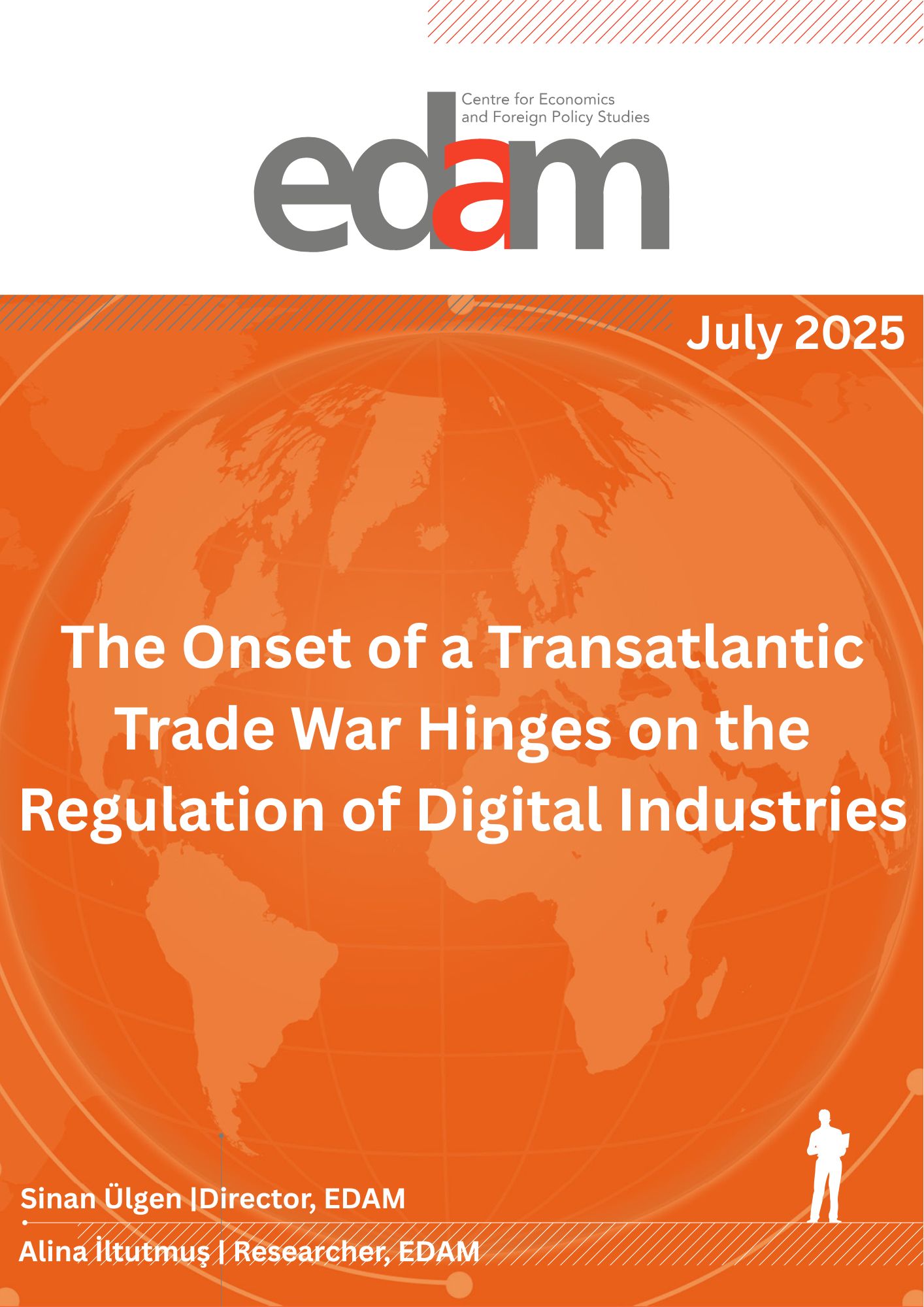
Trends in Turkish Exports in Value Added, by Sector and by Destination
Executive Summary
The 2023 Turkey Export Strategy and Action Plan, which set the target of reaching a value of 500 billion USD in exportsby the year 2023, has clearly failed to boost Turkey’s exports which had reached only a level of 168 billion USD by the end of 2018. Turkey’s export promotion strategy and action plans have been prepared upon a conventional reading of the country’s sectoral competitiveness and trade relations with its partners. It is obvious that a mechanical approach to sector-based export promotion and a binary understanding of target destinations as high and low priority countries do not produce meaningful outcomes. The new world of Global Value Chains (GVCs) has arisen with a complex set of production, distribution, and consumption dynamics which would require a more nuanced approach to understanding trade relations between countries than looking at gross trade figures of countries. In this context, this study analyzes trends in the value added (VA) content of Turkish exports between 2005-2015 and how these compare to trends in the total value of Turkish exports, by sector and by destination.
We examined trends in the value added (VA) content of Turkish exports and their final destinations between 2005-2015 with a focus on and beyond the forward participation of Turkey. We have studied (1) “average VA share” for trading partners and for individual sectors, (2) “VA growth share”, which is the contribution made to total Turkish export VA growth both for individual sectors and trading partners and (3) the time “trend growth” in Turkish VA exports, expressed relative to average Turkish export VA over that period as a growth rate. Policymakers can assess the performance of specific partners including the EU, the US and Russia and industries in producing VA for export over the time span using trend growth in much the same way as an average growth rate. We suggest that high growth sectors are worthy of greater focus and promotion.








